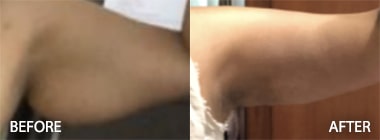The Lateral Paramedian: Revisiting a Forgotten Incision
Introduction
The objective of this review article is to revisit the lateral paramedian incision and examine its strengths and weaknesses as a portal of entry into the peritoneal cavity, and why it has, over the last 20 years, become so infrequently performed. The midline incision has become the workhorse in this period of time, almost to the exclusion of the lateral paramedian incision. Why has the lateral paramedian incision fallen out of favor?
Methods
To provide an answer to this question, a MEDLINE database search was performed using “paramedian” and “incision”, and articles were selected on the basis of applicability throughout the years 1966 to Sept 2006 and include both randomized clinical trials and review articles.
Background
The incision used for a laparotomy is frequently case specific, based upon the area that needs to be accessed. Also, the relative urgency with which exposure must be gained plays a role. Finally, familiarity or comfort with the type of incision on the part of the surgeon determines incision choice.
Anatomy and blood supply schematic:
The lateral paramedian incision is customarily made by opening the skin down to the anterior rectus sheath over the lateral third of the sheath. Picture The rectus muscle is dissected free from its anterior and medial attachments to expose the posterior sheath, which is then incised. Picture The closure is performed by reapproximating the posterior and anterior sheaths separately, while excluding the rectus muscle from the closure. Picture At no point is the rectus muscle divided or sutured; preservation of blood supply and innervation to the rectus abdominis is critical. Picture
The lateral incision and closure is supported in large part by the work of Brennan et al. In a prospective randomized trial containing 360 patients in 1987, Brennan et al demonstrated that the lateral incision of both the anterior and posterior sheaths produced a far smaller incidence of incisional hernia than medial incision of either sheath. 1
Discussion
From a practical standpoint, it is readily apparent that this approach takes both a longer time to develop and to close. In one randomized trial, the average time to open and close a lateral paramedian incision was 22 minutes, as opposed to 18 minutes for mass closure of a midline incision. 2 The lateral paramedian incision requires longer to perform, and, thus, is probably not appropriate in emergent cases. 3
Mobilizing the rectus also necessitates a longer incision. This is due to the fact that the fascia to be closed posteriorly must be exposed by retracting the rectus muscle laterally. Thus, the same exposure within the peritoneal cavity necessitates a longer skin incision for paramedian approach.
Finally, the topic of burst abdomen must be addressed as it relates to the type of closure chosen. Burst abdomen, or evisceration, can be defined as discontinuity of the abdominal fascia in combination with wound dehiscence that necessitates a subsequent operation. A mass, or non-layered closure of midline incisions in combination with liberal length of suture has resulted in very few burst abdomens.
Certain advocates of midline technique cite this low rate of burst abdomen as an advantage over the lateral paramedian incision. No randomized controlled study to date has convincingly shown the rate of burst abdomen in the lateral paramedian incision to be higher to the level of statistical significance.
The aforementioned represent the negative arguments for performing the lateral paramedian incision. However, the paramedian incision has at least two favorable aspects: it rarely results in dehiscence and has a far smaller rate of development of incisional hernia. Donaldson et al published a retrospective chart review of 850 patients who had laparotomies using a lateral paramedian incision between 1977 and 1981. Their review showed no dehiscences in the group and only three incisional hernias, or less than 1%. This sparked the interest for randomized, controlled trials during the1980s and beyond. 4
The import of preventing of incisional hernias must not be understated. Incisional hernias are reported in the literature to occur at a rate of about 10%, with a range of 5 to 15%, in vertical midline incisions. 5 This rate is likely grossly underreported as evidenced by the results of a Mudge and Hughes 10 year study that demonstrated that 35% of these hernias develop 5 or more years after surgery, while less than 50% occur within the first year postop. 6 Twenty per cent of these hernias require surgical repair with failure rate of between 20% for mesh repair to 40% for non-mesh repair. 7
There are several randomized controlled trials in the literature comparing lateral paramedian incisions to midline incisions in specific regard to incisional hernia formation. Pollock et al reported in a prospective randomized controlled clinical trial their experience with midline versus lateral paramedian incisions. 3 After one year, they showed a statistical significance with a p-value of less than 0.001 in the development of incisional hernias between the two groups. In their series of 431 patients, 329 patients were available for follow-up at one year. They reported a total of 22 incisional hernias in these 329 patients, of which 20 were observed in the midline group compared to only 2 for the lateral paramedian group.
Pollock et al took the investigation further by analyzing the incidence of incisional hernias during a longer follow-up period, as they postulated, correctly so, that many of these hernias develop after 1 year postop. 282 patients after major laparotomies were followed for a period of up to four years. Mass and layered techniques were compared and 17 incisional hernias were discovered within four years in the mass group compared with four in the layered group with a p-value of less than 0.01. 8 Seven hernias in the former, and one in the latter, group were not detected within eight months of operation.
One may suggest that it is the layered approach, which prevents that formation of incisional hernias and not merely the choice of incision. Kendall et al answered this question in 1991. 349 patients were randomized to undergo laparotomy under three different scenarios: layered paramedian closure, a mass midline closure, and layered midline closure. 9 After 18 months follow-up, no patient in the lateral paramedian group had developed an incisional hernia. Approximately 7% in each of the midline closures had developed incisional hernias (p-value less than 0.01).
Several other reports in the literature confirm the low rates of incisional hernia after lateral paramedian closures. Gilbert published a 1% incisional hernia rate following lateral paramedian closure with a follow-up of between 1 and 2 years. 10 Donaldson published a series of 231 laparotomies followed at 1 year. His work revealed no wound dehiscences and only one incisional hernia. Additionally, they concluded that suture material played no role in closure. 11 Finally, Guillou published a series of 207 patients who were randomized to midline, medial paramedian incision and lateral paramedian incision. The lateral paramedian incision resulted once again in statistically smaller incidence of incisional hernia. 12
Over 100,000 incisional hernia repairs areperformed annually in the United States alone. 13, 14 The overwhelming majority of these are the result of midline incisions. Multiple studies and trials have consistently demonstrated open repair recurrence of up to 40%, with mesh reducing the recurrence rate to approximately 20%, and laparoscopic data suggests that this can further be reduced to 5 to 10%. 15
However, the laparoscopic approach is not without significant problems. Risks include intraperitoneal mesh adhesions, erosion, fistula formation, and primarily the risk of unrecognized bowel injury. Unrecognized bowel injury can have disastrous implications, and fatalities have been reported. 16, 17, 18
More specifically, there is a tremendous cost issue involved with these surgeries. Earle et al performed 469 laparoscopic incisional hernia repairs and 415 open repairs. Their study revealed an average total hospital cost of $6,396 for laparoscopic and $7,197 for open. 15 Similar studies confirm the relative cost of such repairs. 19, 20
At a bare minimum, the costs annually in the US exceed 600 million dollars. This of course does not include the reoperations due to inherent morbidities in mesh repair, including recurrence, mesh infection, and wound complications. Not to mention the impact upon society with regard to lost work and productivity .
Conclusions
Over the past two decades, the midline incision for laparotomy has all but replaced the lateral paramedian incision. In an emergent situation in which time is critical and exposure is of paramount importance, the midline incision should be the standard. However, in an elective situation where time and preoperative planning allow for a more polished approach, the lateral paramedian incision should be strongly considered. With its exceptionally low rate of dehiscence and incisional hernia rate of less than 1%, the lateral paramedian incision produces significantly less morbidity in this patient population. And, ultimately, this incision would result in a phenomenal medical savings in the short and long term.
Article 1: The Role of Telemedicine in the Management of the Cosmetic Surgery Patient
Article 2: Breast Implant Reconstruction after Radiation
Article 3: Breast Reconstruction after Mastectomy
Article 4: Protocol for the Management of Keloid Scars
Article 5: Melanoma and the Role of Sentinel Lymph Node Biopsy
Article 6: Desmoid tumors of Bilateral Breasts
Article 7: The Role of the Paramedian Incision
Come to Hughes Plastic Surgery in Los Angeles and Beverly Hills. You will be glad that you did.











